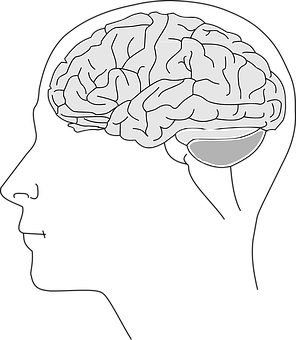When a neuron is not generating an action potential, it is called a resting neuron. The resting membrane potential is acheived by ion pumps and ion channels
A neuron is considered at rest when it is not generating an action potential. During this unstimulated state, the cytosol, or intracellular fluid inside the surface of the cell membrane has a negative electrical charge compared with the charge outside the cell membrane. This potential difference is called the resting membrane potential.

Ion Channels and Ion Pumps Within the Cell Membrane
The cell membrane forms a protective boundary around nerve cells. Within the membrane is a lipid bi-layer that contains ion pumps and ion channels. When a neuron is at rest, the ion pumps and ion channels function to create a difference in concentration gradients inside and outside the cell membrane. This difference is able to occur because the membrane has different permeabilities to some of those ions, allowing them to cross over the surface of the membrane, into the neuron.
The concentration gradient across a neurons cell membrane is established by ion pumps. They do this by continually moving ions in and out of the neuron against their concentration gradients. For example, a solute will move from high areas of concentration toward low areas of concentration. The permeability in a cell membrane, however, is due to ion channels. In contrast with ion pumps, ion channels work by allowing ions to move across the cell membrane, toward their concentration gradients. As such, ion pumps and ion channels work opposite of one another.
Intracellular and Extracellular Solutions
The fluid outside a cell membrane is a diluted solution of sodium chloride ions. In contrast, the fluid inside a cell membrane is a high concentration of potassium ions. These potassium ions are balanced by different anions or negatively charged ions. The cell membrane is impermeable to these anions, however, it is permeable to potassium ions. This is due to a force that acts to remove potassium from the inside, to outside the cell or neuron.
When this efflux of potassium occurs, a potential difference across the cell membrane occurs because negative ions within the cell are no longer balanced by potassium. This then creates an electrostatic force, preventing potassium ions from moving out of the cell. This means that two opposing forces act to remove potassium from inside the neuron, to the outside. When these forces are equal, and the concentration of potassium is the same inside and outside the cell, there is only a small potential difference which is called an equilibrium potential.
References:
Longstaff, A. Neuroscience. 2nd Ed. Taylor & Francis Group. NY
Siegal, A., & Sapru, H. Essential Neuroscience. 2nd Ed. Lippincott Williams & Wilkins. MD
You have a minor misspelling in the following sentence:
It should be achieved instead of acheived.Downvoting a post can decrease pending rewards and make it less visible. Common reasons:
Submit